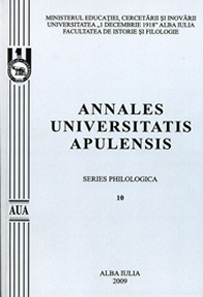Teaching English for Multiple Intelligences
Teaching English for Multiple Intelligences
Author(s): Teodora PopescuSubject(s): Foreign languages learning
Published by: Universitatea »1 Decembrie 1918« Alba Iulia
Keywords: English Language Teaching; Multiple Intelligences (MI) theory
Summary/Abstract: The aim of this article is to provide some basic insights into the theory of Multiple Intelligences (MI) and to give practical suggestions as to how it can be applied to the English language classroom. We will start with a review of the main tenets of Harvard professor Howard Gardner’s influential theory and will continue with possible applications to ELT. Teachers may find useful information on the relevance of this theory in the lesson plans outlined herein. Gardner developed his theory of MI in the early 1980s (Gardner 1983). He reached the conclusion that traditional concepts about intelligence employed in educational and psychological circles for almost a hundred years were in need for dramatic change. Gardner advocated the idea that the theory according to which a “pure” intelligence that can be measured by a single IQ score is utterly untenable. Gardner further argues that intelligence is a multifaceted phenomenon, consisting of a multitude of capacities. Corroborating his own findings with evidence from other fields, such as anthropology, developmental psychology, animal physiology, brain research, cognitive science, and biographies of exceptional personalities, Gardner postulated that there are at least seven identifiable intelligences that people seems to possess and which are more or less developed in each individual. Later on he added an eighth intelligence to the list (Gardner 1993). These intelligences are: linguistic intelligence (the ability to understand the phonology, syntax, and semantics of language, and its pragmatic uses to convince others of a course of action, help one to remember information, explain or communicate knowledge, or reflect upon language itself), bodily-kinaesthetic intelligence (characterised by the ability to control one’s bodily motions and the capacity to handle objects skilfully), spatial intelligence (the ability to perceive the visual world accurately, to perform transformations upon one’s initial perceptions, and to be able to re-create aspects of one’s visual experience - even in the absence of the relevant physical stimuli), musical intelligence (the ability to understand and express components of music, including melodic and rhythmic patterns), logical-mathematical intelligence (the capacity to understand and use logical structures, including patterns and relationships, statements and propositions, through experimentation, quantification, conceptualization, and classification), intrapersonal intelligence (the ability to keep in control one’s own emotional life through awareness of inner moods, intentions, motivations, potentials, temperaments, and desires, and the capacity to symbolize these inner experiences, and to apply these understandings to help one live one’s life), interpersonal intelligence and naturalist intelligence.
Journal: Annales Universitatis Apulensis. Series Philologica
- Issue Year: 11/2010
- Issue No: 2
- Page Range: 316-348
- Page Count: 33
- Language: English

